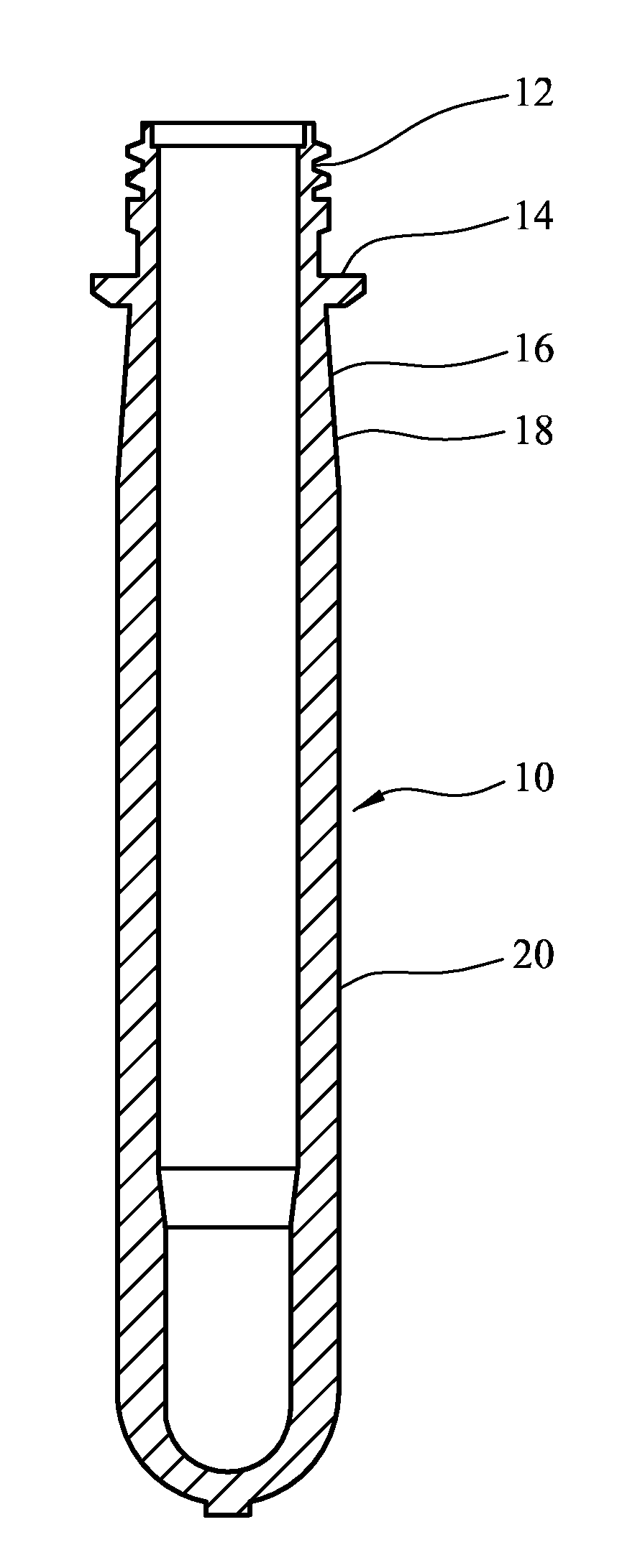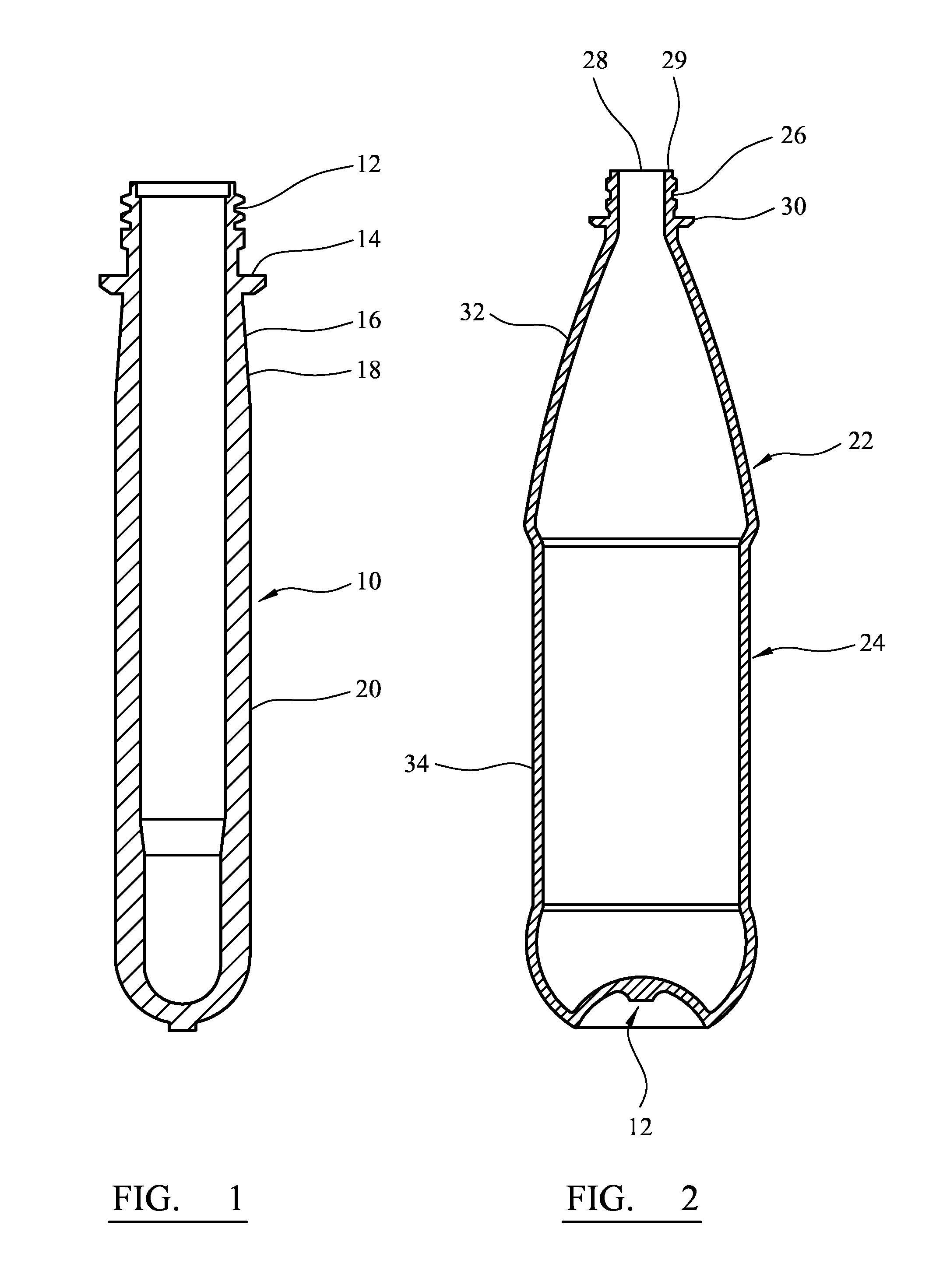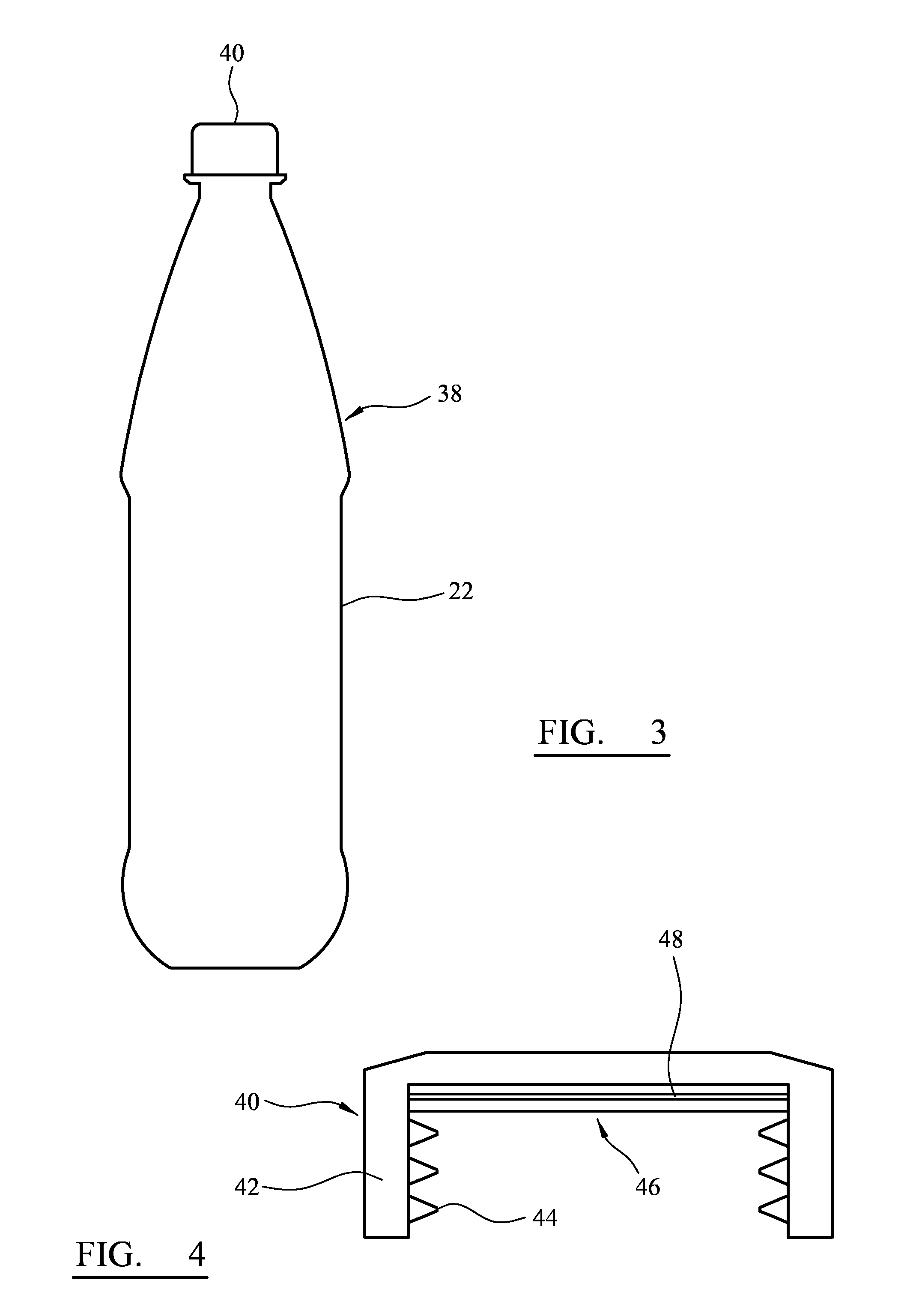Scavenging oxygen
a technology of oxygen and oxygen, applied in the field of oxygen scavenging, can solve the problems of limiting the applicability of polymers, affecting the stability of oxygen-containing food, and all polymers showing some degree of permeability to oxygen, so as to achieve low catalyst amount, minimal impact on other package properties, and high reaction rate
- Summary
- Abstract
- Description
- Claims
- Application Information
AI Technical Summary
Benefits of technology
Problems solved by technology
Method used
Image
Examples
specific embodiments
[0083]Specific embodiments of the invention will now be described, by way of example, with reference to the accompanying drawings, in which:
[0084]FIG. 1 is a cross-section through a preform;
[0085]FIG. 2 is a cross-section through a bottle;
[0086]FIG. 3 is a side elevation of a bottle including a closure;
[0087]FIG. 4 is a closure, partly in cross-section.
[0088]The following materials are referred to hereinafter.
[0089]Ethylene vinyl acetate copolymer (15% vinylacetate content)—Elvax 550 supplied by DuPont.
[0090]Low density polyethylene (LDPE)—LD605BA supplied by ExxonMobil.
[0091]Styrene-ethylene-butylene-styrene block copolymer—Versaflex HCMT555 supplied by GLS Corporation.
[0092]Sodium Borohydride (Venpure SF) from Rohm & Hass.
[0093]Calcium hydride (purity 99%) from Sigma-Aldrich.
[0094]A preform 10 illustrated in FIG. 1 can be blow molded to form a container 22 illustrated in FIG. 2. The container 22 comprises a shell 24 comprising a threaded neck finish 26 defining a mouth 28, a cappi...
example 1
[0102]2 kg of sodium borohydride was compounded with 23 kg of Elvax 550 on a 24 mm Prism TSE 24HC twin screw extruder fitted with a die-face cutter. The feed zone of the extruder was kept under a nitrogen blanket. The feed zone temperature was set at 50° C. and the other 10 zones of the extruder were set at 130° C. The compound was pelletised and stored in a dry nitrogen atmosphere. 3 mm thick plaques (6×4 cm) were moulded from the sodium borohydride compound using a Boy 22M injection moulder machine at 190° C.
example 2
[0103]2 kg of sodium borohydride was compounded with 23 kg of Versaflex HCMT555 on a 24 mm Prism TSE 24HC twin screw extruder fitted with a die-face cutter. The feed zone of the extruder was kept under a nitrogen blanket. The feed zone temperature was set at 50° C. and the other 10 zones of the extruder were set at 130° C. The compound was pelletised and stored in a dry nitrogen atmosphere. 3 mm thick plaques (6×4 cm) were moulded from the sodium borohydride compound using a Boy 22M injection moulder machine at 200° C.
PUM
| Property | Measurement | Unit |
|---|---|---|
| particle size | aaaaa | aaaaa |
| wt % | aaaaa | aaaaa |
| wt % | aaaaa | aaaaa |
Abstract
Description
Claims
Application Information
 Login to View More
Login to View More - R&D
- Intellectual Property
- Life Sciences
- Materials
- Tech Scout
- Unparalleled Data Quality
- Higher Quality Content
- 60% Fewer Hallucinations
Browse by: Latest US Patents, China's latest patents, Technical Efficacy Thesaurus, Application Domain, Technology Topic, Popular Technical Reports.
© 2025 PatSnap. All rights reserved.Legal|Privacy policy|Modern Slavery Act Transparency Statement|Sitemap|About US| Contact US: help@patsnap.com



